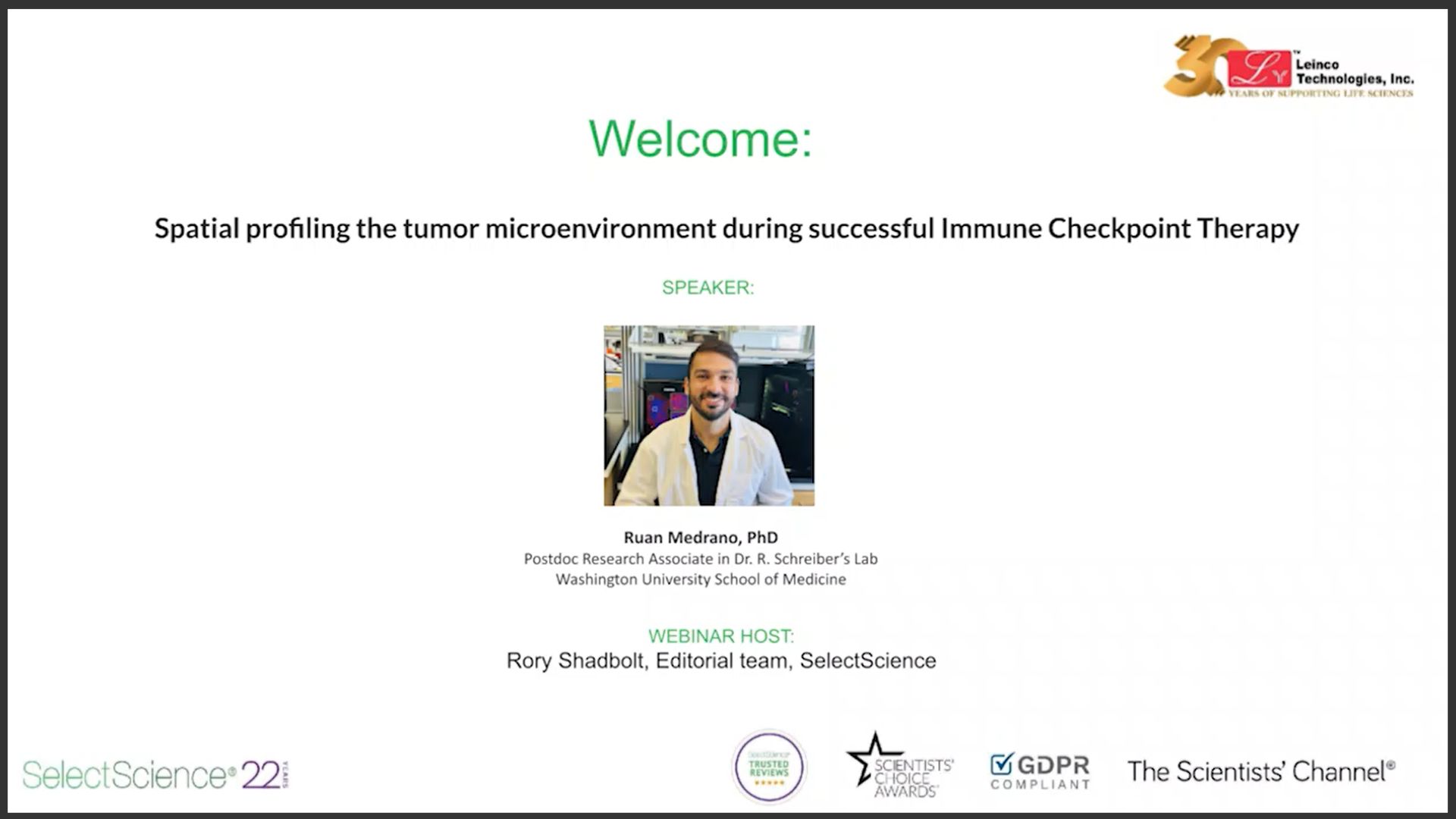Spatial Profiling the Tumor Microenvironment During Successful Immune Checkpoint Therapy
Function in multicellular organisms depends on the balance of interactions between cells in the tissue, which are complex, structured and dynamic cellular ecosystems. Tumors contain spatially organized microenvironments, composed of tumor cells, immune cells, stroma and auxiliary components. The organization of these components at the cellular and tissue level plays a critical role in the effectiveness of cancer immunotherapies. Deciphering the relation between structure and function requires spatial technologies to be able to identify recurrent cellular communities that are organized to execute specific functions. In this webinar we will provide an overview on: proteomic spatial profiling methods such as CODEX® (Pheno Cycler™), tumor spatial biology and immune mediated mechanisms involved with successful response to Immune Checkpoint Therapy (ICT) i.e.,anti-PD-1 and/or anti-CTLA-4. We will discuss studies from these areas of research as well as use data generated in the Schreiber Lab to show which immune populations are involved in an effective response to ICT and how they are organized in the tumor tissue.
Key learning objectives:
- Tumor infiltrating immune populations
- Proteomic spatial profiling
- Types of spatial analysis
- Immune checkpoint blockade

Gain access to the webinar by filling in the form below.

